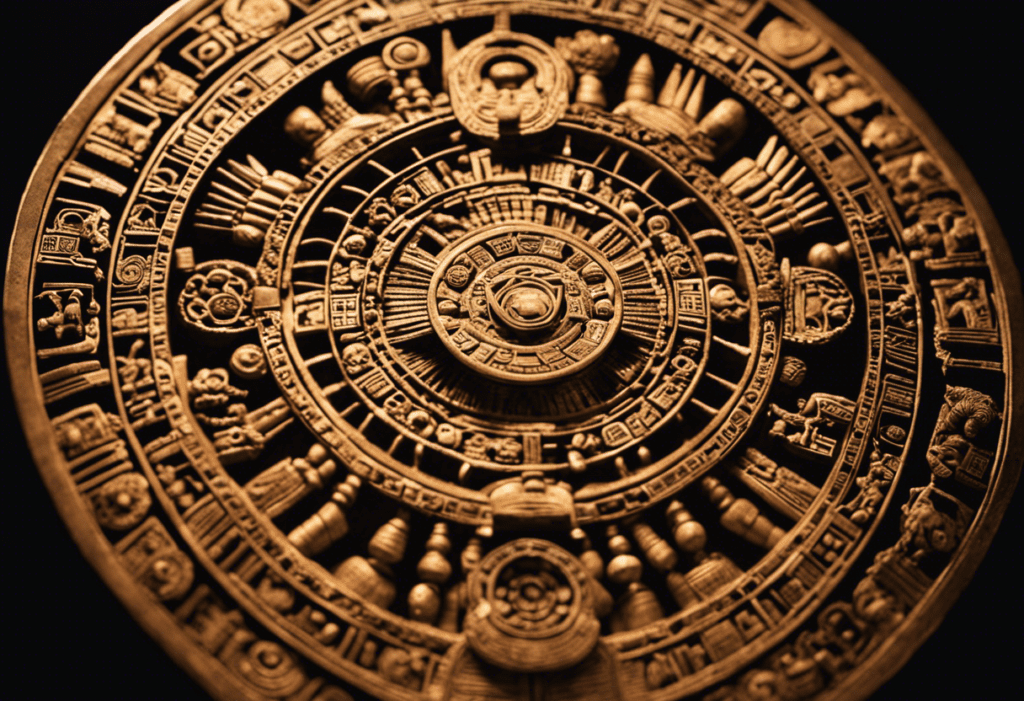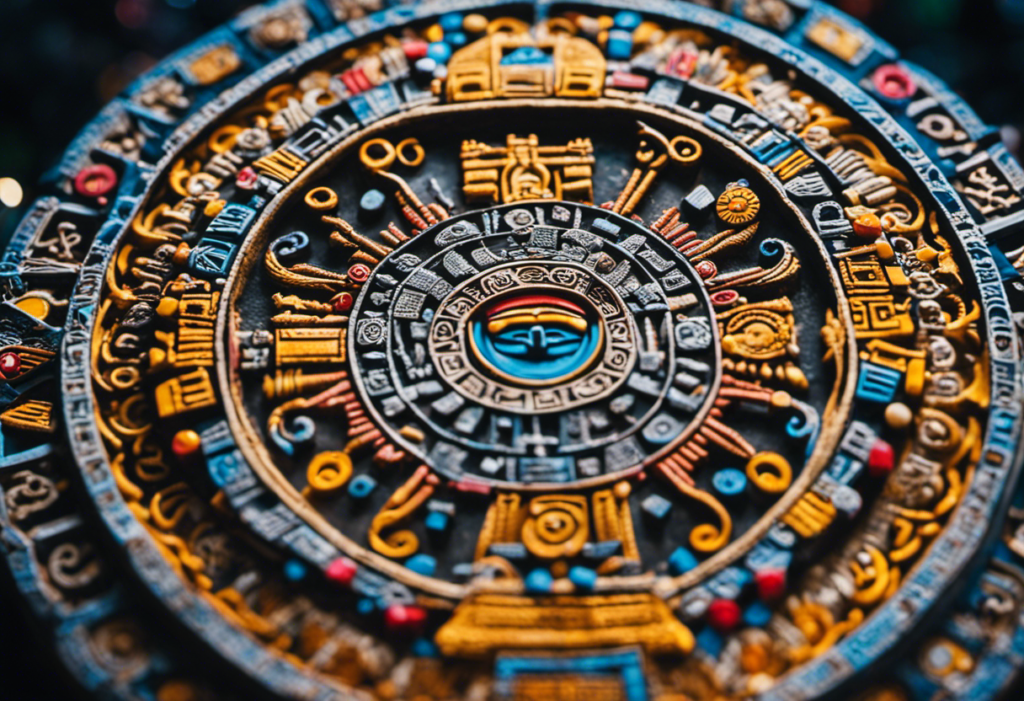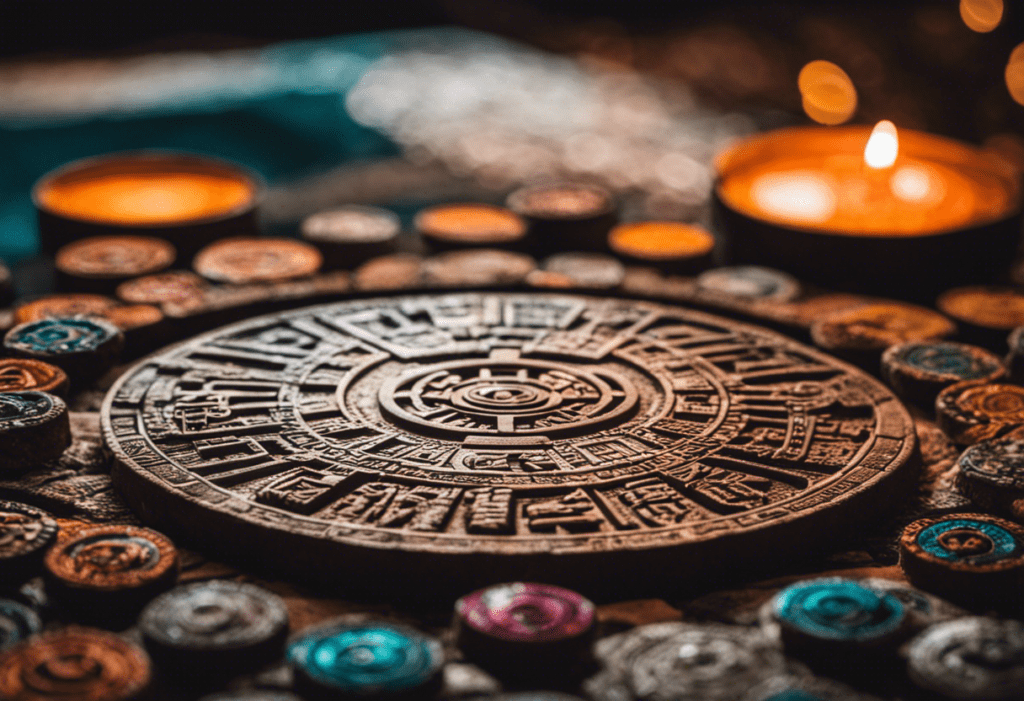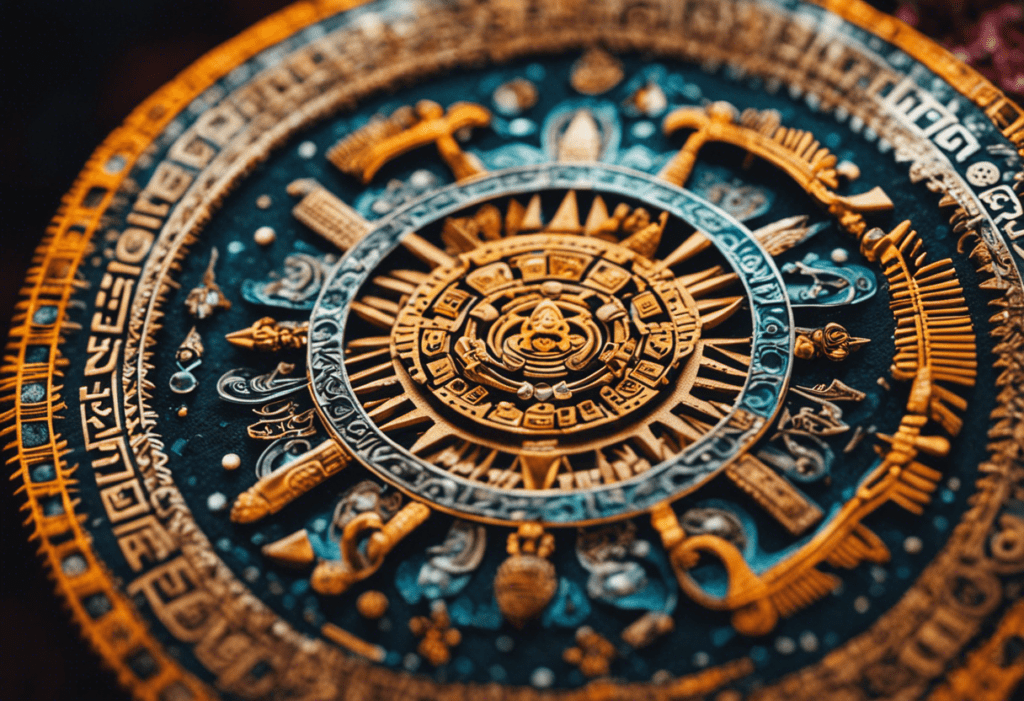Unlock the secrets of the ancient Aztec civilization as we delve into the enigmatic world of the Xiuhpohualli: The Aztec Solar Calendar and its profound significance.
Like a key to the past, this celestial timekeeping system offers a window into the intricate workings of Aztec society, guiding agricultural cycles, religious practices, and cultural traditions.
Join us on a journey of discovery as we unravel the mysteries and explore the enduring legacy of this remarkable calendar.
Key Takeaways
- The Xiuhpohualli originated from ancient Mesoamerican civilizations, specifically the Aztecs, and consisted of 18 months with 20 days each, totaling 360 days.
- The calendar had immense cultural significance in Aztec society, as it allowed them to align their actions with celestial movements and cosmic forces.
- The Xiuhpohualli played a crucial role in Aztec agriculture, providing guidance for optimal planting, harvesting, and resource management.
- The calendar also influenced Aztec religious practices, determining auspicious dates for ceremonies, sacrifices, and festivals, and guiding the selection of deities to be honored.
Origins of the Xiuhpohualli: Tracing the Aztec Solar Calendar’s Beginnings
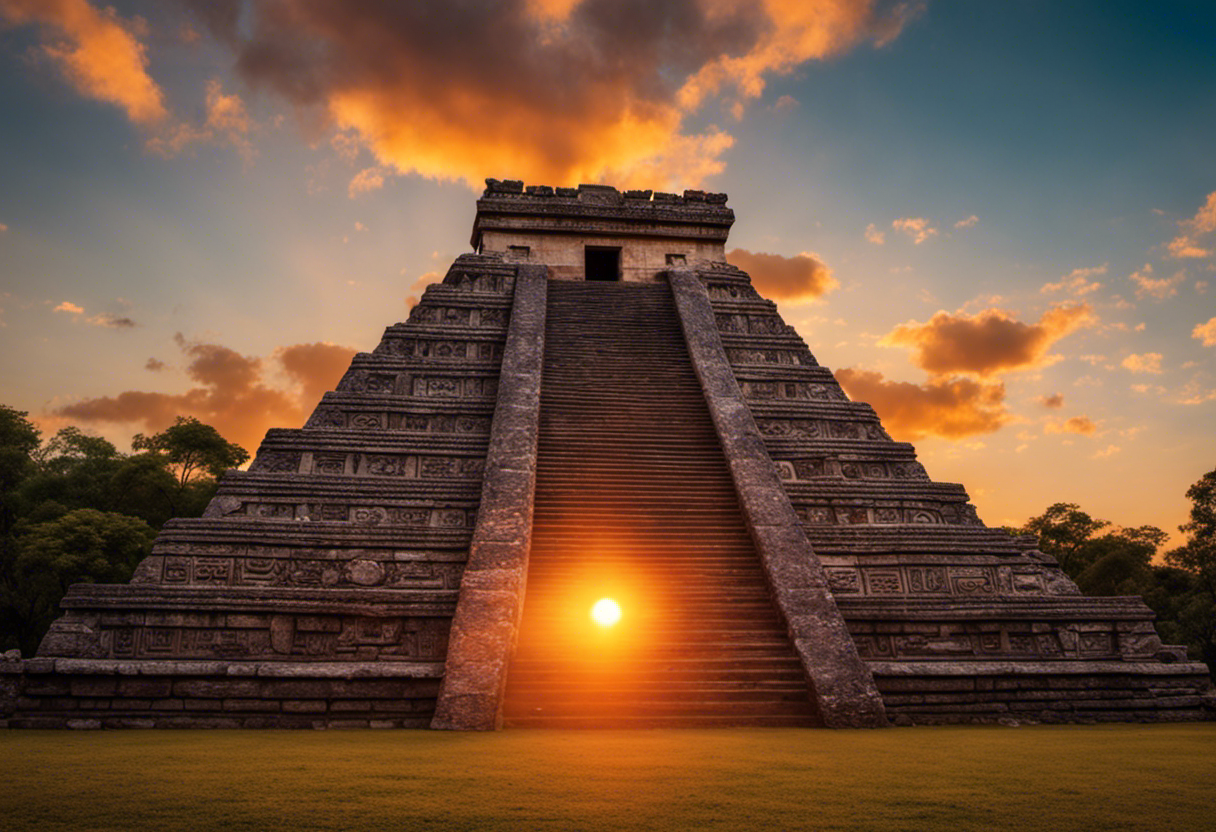

The origins of the Xiuhpohualli can be traced back to ancient Mesoamerican civilizations. This solar calendar, used by the Aztecs, holds immense cultural significance and offers insights into the complex society of the time. The Xiuhpohualli, which means ‘counting of the years’ in Nahuatl, the Aztec language, was an essential tool for tracking time and organizing religious ceremonies and agricultural activities.
The tracing of the origins of the Xiuhpohualli leads us to the Olmec civilization, which flourished in Mesoamerica from 1200 to 400 BCE. The Olmecs were renowned for their advanced understanding of astronomy and their use of calendars. It is believed that the Aztecs adopted their solar calendar system from the Olmecs and further developed it to suit their own cultural and religious practices.
The cultural significance of the Xiuhpohualli cannot be overstated. It served as a guide for religious rituals, agricultural practices, and even political decision-making. The Aztecs believed that the movements of celestial bodies were directly connected to the events on Earth, and the Xiuhpohualli allowed them to align their actions with cosmic forces.
Understanding the Xiuhpohualli: Exploring the Structure and Function of the Aztec Solar Calendar
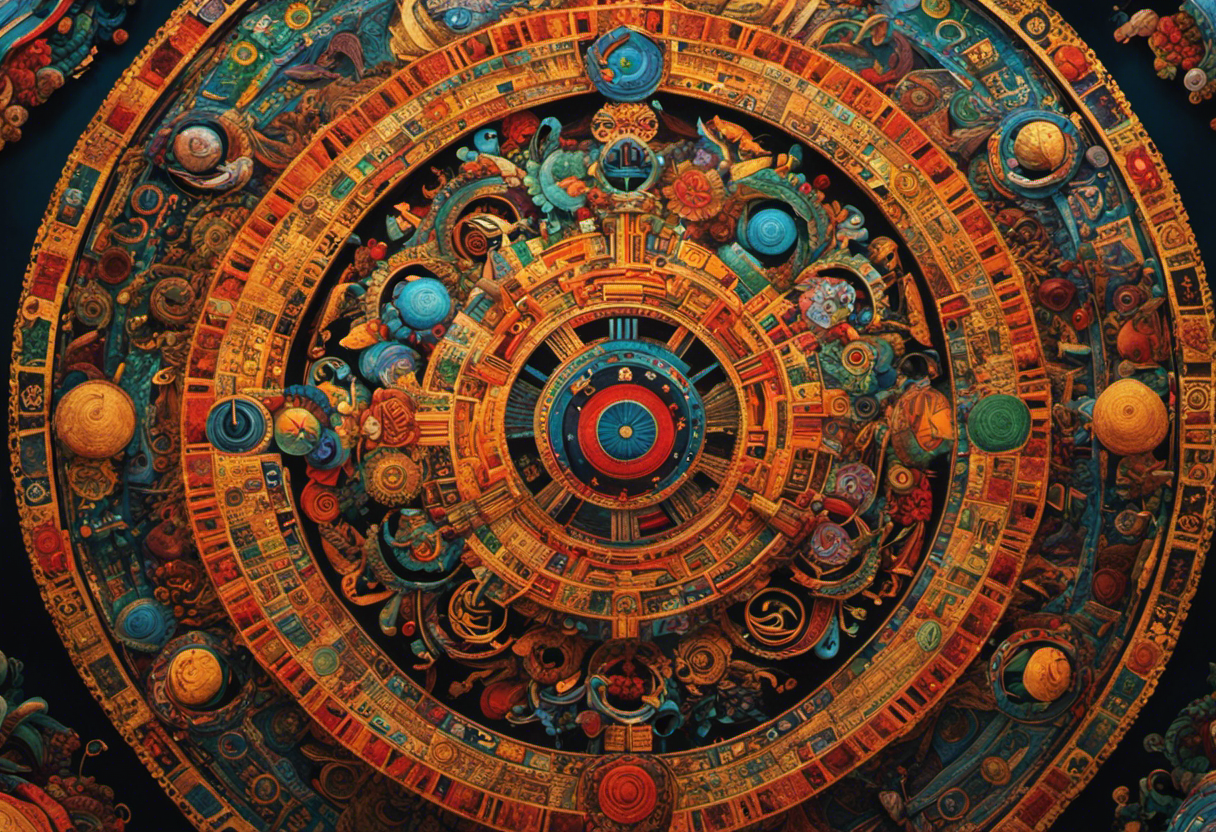

A key aspect of understanding the Xiuhpohualli lies in exploring the intricate structure and multifaceted functions of the Aztec solar calendar. The Xiuhpohualli consisted of 18 months, with each month divided into 20 days, resulting in a total of 360 days. This structure was further supplemented by the addition of five extra days, known as the Nemontemi, which were considered unlucky and were associated with purification rituals.
Exploring interpretation:
- The structure of the Xiuhpohualli reflects the Aztec’s deep understanding of astronomy and the solar cycle. It allowed them to track the movement of the sun and make predictions about agricultural activities and religious ceremonies.
- The interplay between the solar calendar and other celestial bodies, such as the moon and Venus, suggests that the Aztecs had a sophisticated understanding of astronomical phenomena.
Cultural practices:
- The Aztecs believed that each day in the Xiuhpohualli had its own unique characteristics and influences. This belief influenced their decision-making processes, such as determining auspicious dates for important events or planning agricultural activities.
- The calendar played a crucial role in religious ceremonies and rituals. It provided a framework for determining the timing of festivals and sacrifices, as well as for interpreting omens and predicting the future.
Solar Significance: The Role of the Xiuhpohualli in Aztec Agriculture and Harvesting
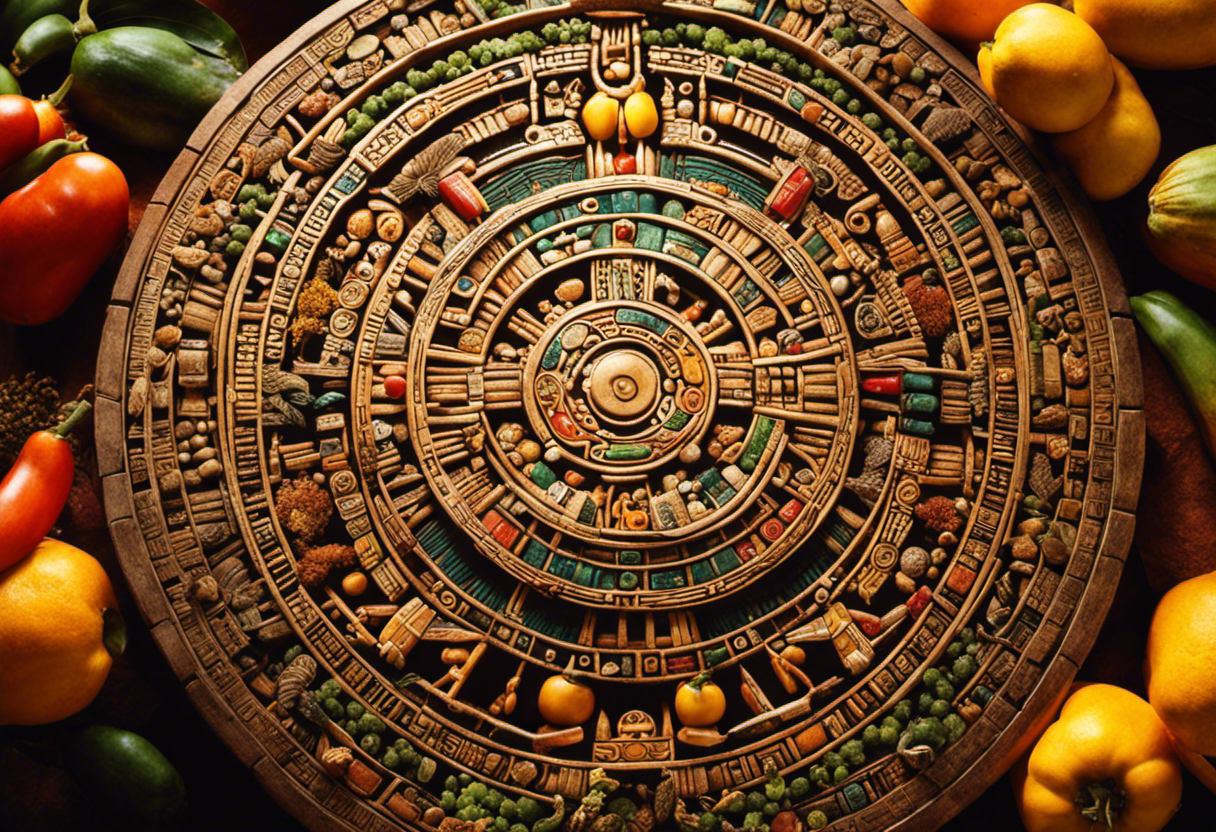

Playing a pivotal role in the agricultural practices of the Aztecs, the Xiuhpohualli solar calendar provided essential guidance for optimal planting, harvesting, and resource management. Aztec agriculture was heavily dependent on the cycle of seasons and the availability of water. By closely observing the movements of the sun and the stars, the Aztecs were able to determine the appropriate times for planting and harvesting their crops.
The Xiuhpohualli calendar consisted of 18 months, each lasting 20 days. These months were further divided into four five-day periods, known as nemontemi, which were considered to be unlucky and were often used for religious ceremonies and festivals. The alignment of the calendar with the solar year allowed the Aztecs to accurately predict the arrival of the rainy season, which was crucial for the success of their agriculture.
During the harvest seasons, the Aztecs relied on the solar calendar to determine the best time to gather their crops. They understood that the quality and quantity of their harvest depended on factors such as the sun’s position, temperature, and rainfall. By utilizing the Xiuhpohualli calendar, they were able to ensure that their crops were harvested at the peak of their ripeness, maximizing their yield and nutritional value.
Furthermore, the solar calendar also played a crucial role in resource management. The Aztecs practiced a form of sustainable agriculture, rotating their crops and allowing the land to rest between planting seasons. The Xiuhpohualli calendar helped them to accurately schedule these rotations, ensuring that the land remained fertile and productive.
Rituals and Ceremonies: How the Xiuhpohualli Guided Aztec Religious Practices
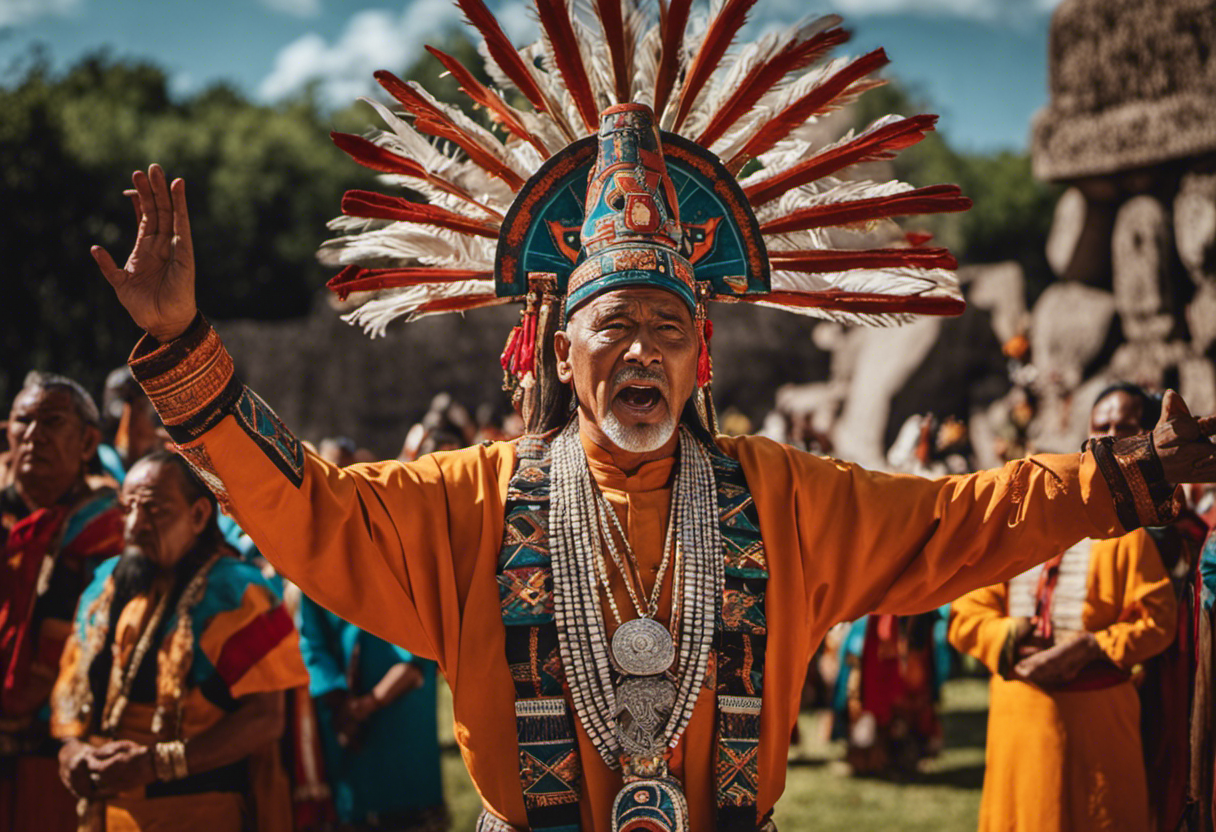

Aztec religious practices were guided by the Xiuhpohualli solar calendar, which played a vital role in the planning and execution of rituals and ceremonies. The calendar, with its precise calculations of celestial events, provided the Aztecs with a framework for their religious observances.
The Xiuhpohualli influenced a wide range of Aztec ceremonies, which were conducted to honor the gods and maintain the cosmic order. Here are two ways in which the solar calendar guided Aztec religious practices:
- Scheduling of Ceremonies: The Xiuhpohualli helped determine the most auspicious dates for conducting ceremonies. Aztec priests consulted the calendar to identify the most favorable times for offering sacrifices, performing rituals, and conducting important religious festivals. This ensured that the ceremonies were conducted at the most propitious moments, maximizing their efficacy.
- Selection of Deities: The Xiuhpohualli also played a role in the selection of deities to be honored in specific ceremonies. Each day of the calendar was associated with a particular god or goddess, and the Aztecs believed that invoking the appropriate deity on a given day would bring about the desired outcome. The solar calendar guided the choice of deities to be worshiped, ensuring that the right gods were appeased for each ceremony.
Legacy of the Xiuhpohualli: Examining the Continued Influence of the Aztec Solar Calendar


Despite the passage of centuries, the influence of the Xiuhpohualli solar calendar continues to be felt in various aspects of contemporary Mesoamerican culture and society.
One significant area where the influence of the Aztec solar calendar can be observed is in modern calendars. While the Xiuhpohualli itself is no longer in use, its legacy can be seen in the way modern calendars in Mesoamerica still incorporate elements of the ancient system. For example, many contemporary calendars continue to follow the 365-day cycle, similar to the Xiuhpohualli. Additionally, the names of the months in some modern Mesoamerican calendars still draw inspiration from the original Aztec system.
Furthermore, the influence of the Xiuhpohualli can also be seen in cultural preservation initiatives. The Aztec solar calendar is not only a historical artifact but also a symbol of Mesoamerican identity and heritage. As a result, efforts to preserve and promote indigenous cultures often include the exploration and celebration of the Xiuhpohualli. Institutions such as museums and cultural centers display replicas or original artifacts related to the calendar, educating visitors about its significance and helping to ensure its continued recognition.
Conclusion
In conclusion, the Xiuhpohualli, the Aztec solar calendar, played a crucial role in the lives of the Aztec people. Its origins can be traced back to ancient civilizations, and its structure and function were integral to the agricultural practices and religious ceremonies of the Aztecs.
Even though the Aztec civilization has long since disappeared, the legacy of the Xiuhpohualli continues to influence and inspire modern understandings of timekeeping and cultural practices. It stands as a vivid testament to the ingenuity and sophistication of the Aztec civilization.

